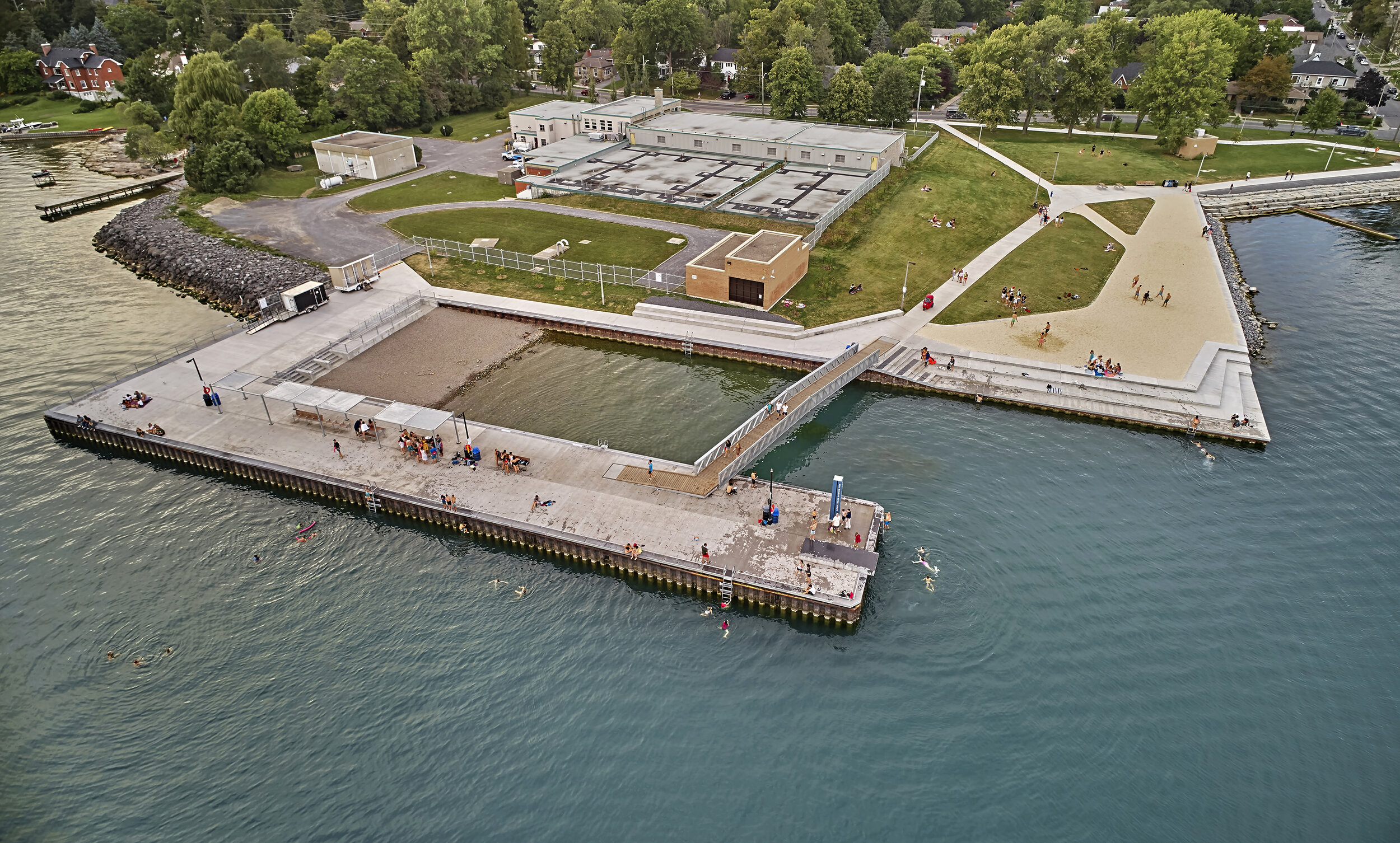Reconnecting people to water
Breakwater Park delivers on a promise for a magically immersive encounter with Lake Ontario.
The award winning project by urban design studio Claude Cormier Associates, was developed in three parts: the revitalisation of an existing park, a redesign of shoreline infrastructure, and an expansion into neighbouring terrain with a derelict post-industrial dock, transformed to become Canada’s first deep water urban swimming pier.
Breakwater Park in Ontario, Canada. Photo credit: Industryous Photography
Part Three arose serendipitously while working on Parts One and Two. An observation of spontaneous swimming, sunning, and kite boarding by daring residents at the derelict pier just beyond the existing park limit hinted to some irresistible possibilities.
The city’s Water Treatment Plant, which controlled the site and dock, agreed to a park transformation affectionately renamed after hometown Tragically Hip hero and Great Lakes advocate, Gord Downie.
The award winning project was developed in three parts: Photo credit: Industryous Photography
A new path turns off the revitalised park promenade to reveal an upland beach, flaring southwards into a full width of 30m along the water. Here, sand transitions to a three-tiered concrete terrace descending to the lake level. Steel sheet pile walls and tiebacks were cut down, with a new dock wall bracing system integrated into the terrace steps.
Tier widths of 1.5m give ample space for reclining, sitting in the water, or taking a flying plunge into the deep. The geometry of the flared turn around at the tiered corner deflects large wave run-up away from the beach above.
The lake bed within the slip was raised to create a pebble beach cove where visitors can gradually enter a protected calm-water zone. An accessibility feature is provided here by a stair and ramp, permitting water access for all abilities.
Breakwater Park is Canada’s first deep water urban swimming pier. Photo credit: Industryous Photography
The march to the water ends at the pier. A galvanised truss bridge reinforces the beach path diagonal, inflected in the middle for passing canoes and kayaks, and visually linking the pier, slip, and tiered beach steps with each other.
Photo credit: Industryous Photography
Like a small island in the middle of the lake, the pier showcases all moods of the water. Calm water within the slip transitions to larger waves beyond the bridge.
A diving platform at the dock’s east end teases endless lines of lake jumpers into the deep water. Buoyed by large swells on the south side of the pier, swimmers surrender to the thrill of the elements, with safe exit ladders at arm’s reach.
Photo credit: Industryous Photography
Part One of the project comprised an upgrade of the existing Breakwater Park, to improve connectivity, add trees, ameliorate a half-kilometre long allée of century-old maples, widen pathways, install new furniture and lighting, as well as construct seating platforms next to the lake.
Part Two required a restoration of pebble beaches and erosion protection revetments along the park’s undulating shore. Originally built on lake-fill extending from a historic breakwater wall, Breakwater Park faces a long fetch off Lake Ontario, vulnerable to some of the windiest wave and shoreline conditions in the country.
Photo credit: Industryous Photography
The revitalised Breakwater Park and Gord Edgar Downie Pier have sparked a eureka moment in Kingston, reawakening a profound link with the water from only twenty years ago when combined sewer overflows made swimming here unthinkable. The park’s phenomenal popularity attests to its promise kept for a magical encounter with Lake Ontario, the region’s most distinguished feature.
The project won the 2019 Canadian Society of Landscape Architects National award in the medium-scale public landscapes category.





